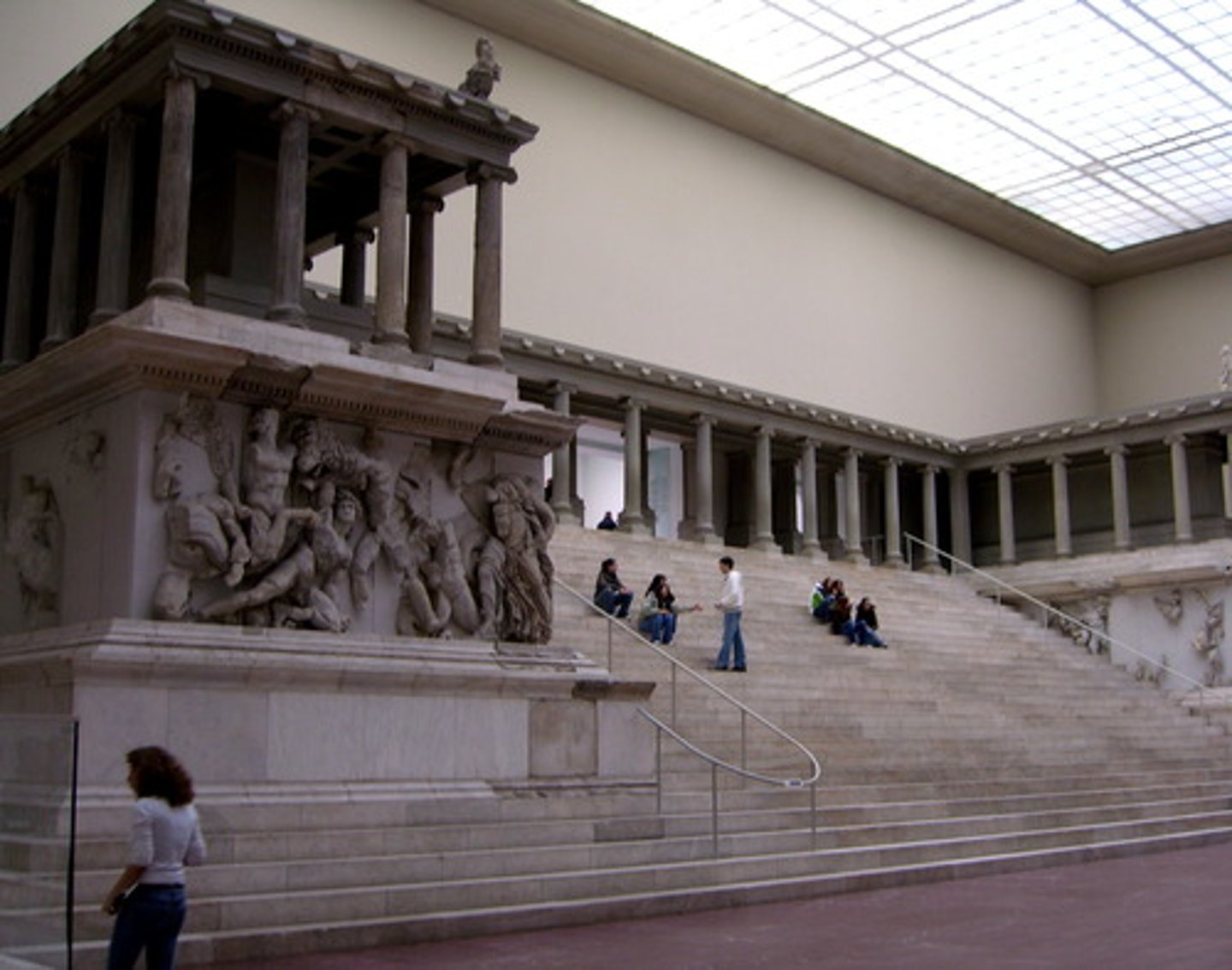Art History Unit 1 ANCIENT GREEK ARCHITECTURE
1/21
There's no tags or description
Looks like no tags are added yet.
Name | Mastery | Learn | Test | Matching | Spaced |
|---|
No study sessions yet.
22 Terms
Temples
embodied art, worship, and politics, takes on role of monument, remind public service they owe to city-state
Temple lay out
peristyle (stones/columns) surrounding the cella (central hall area)
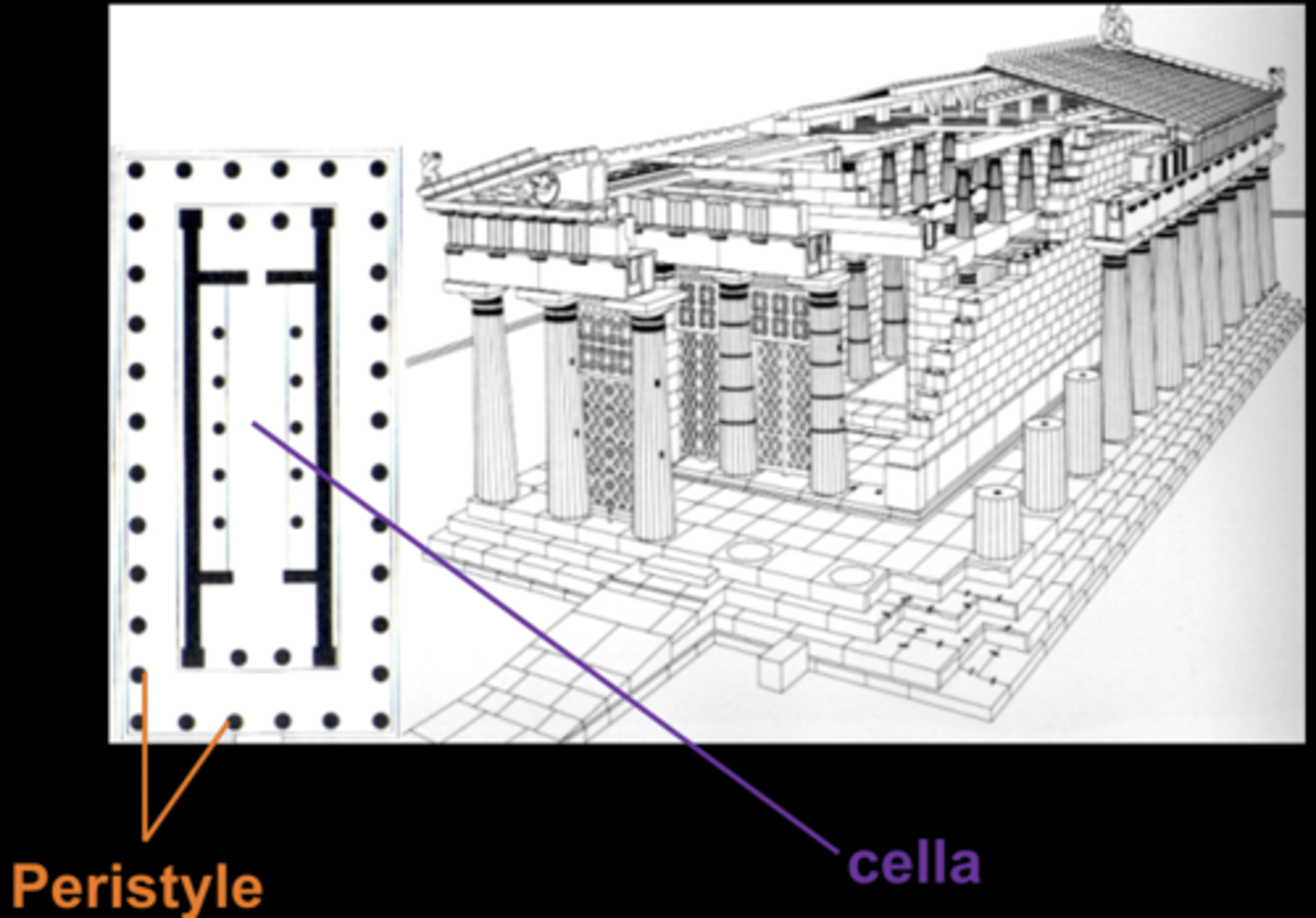
Column layout
shaft, with fluting and capital at the top
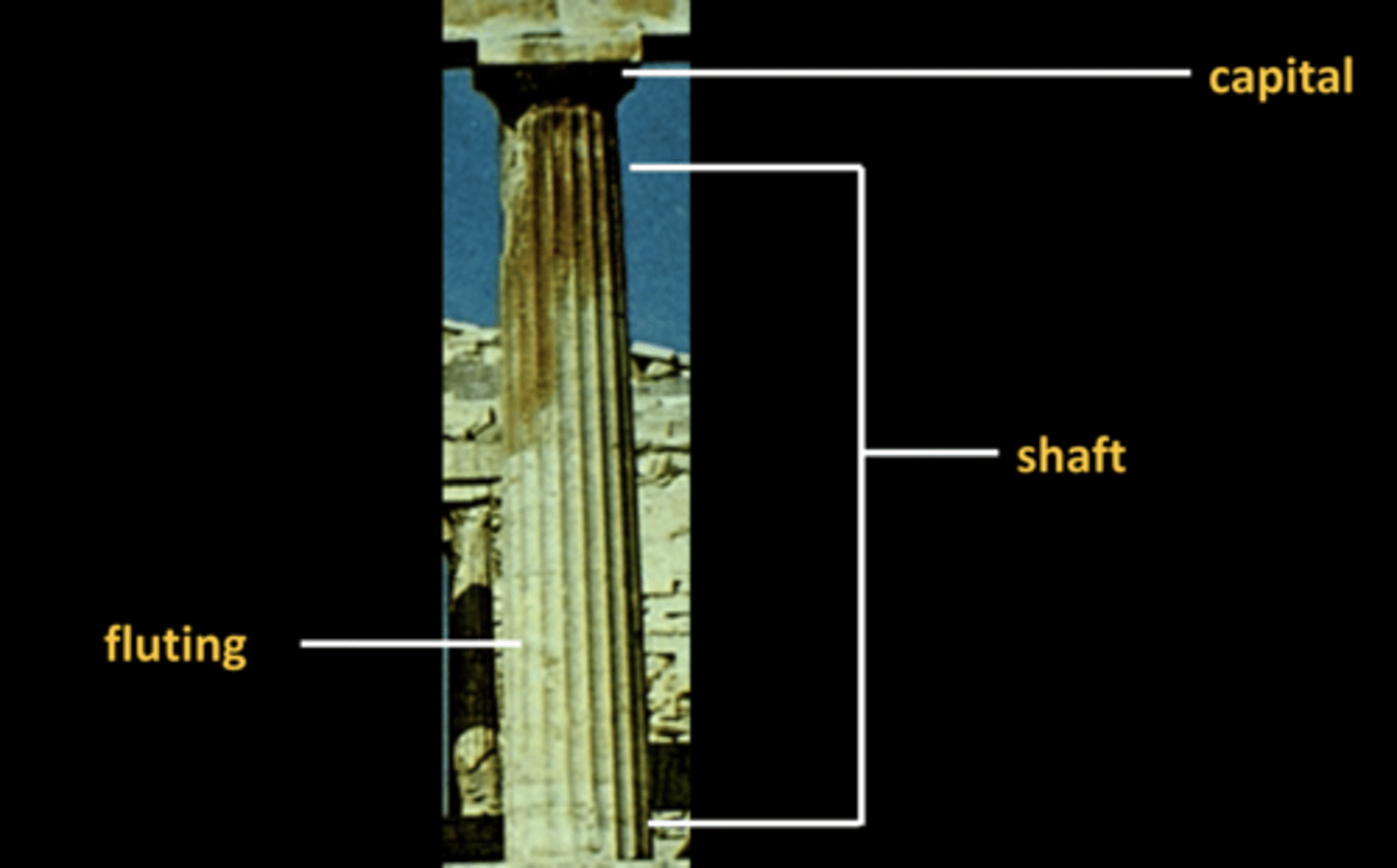
3 main column orders
doric (straight capital), ionic (curved capital, narrow, elegant) corinthian (fancy elaborate capital, latest capital)
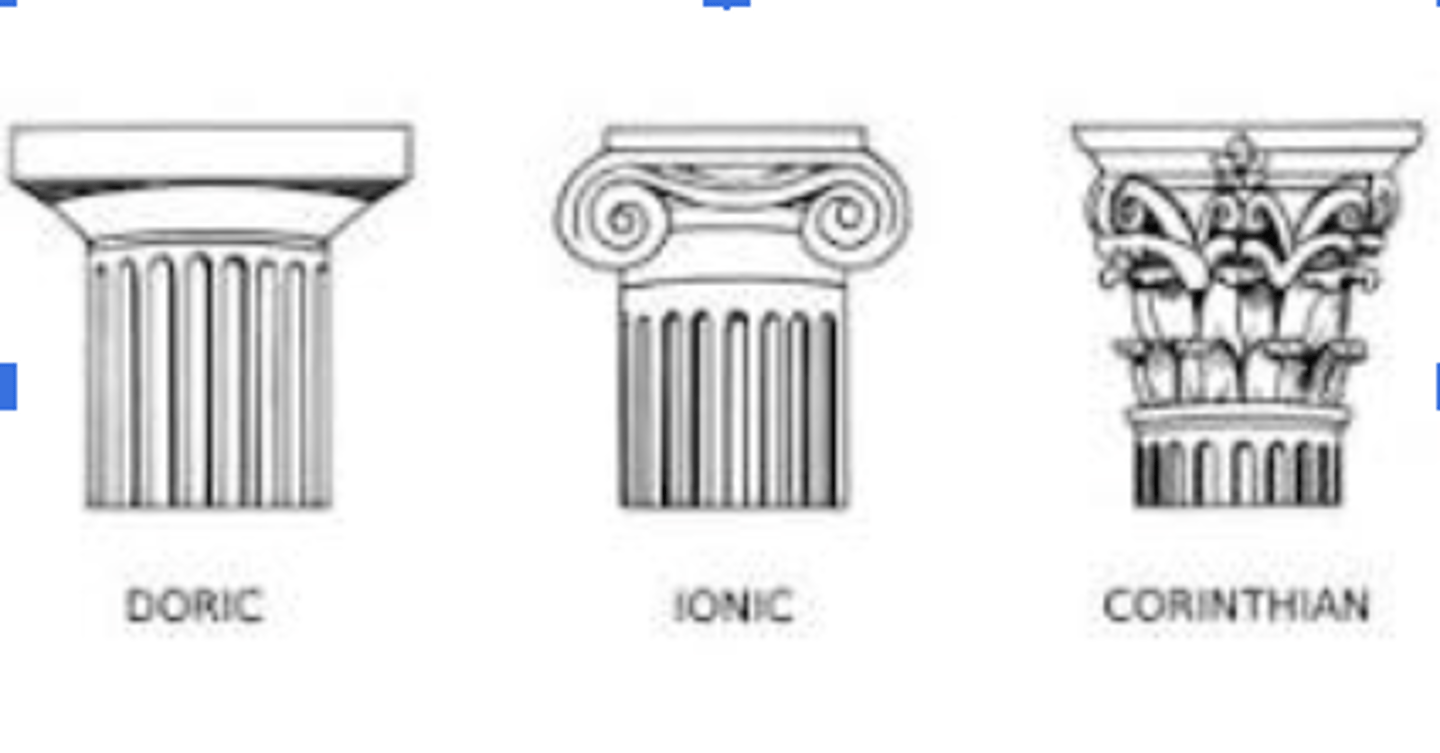
Entablature
above the columns, includes architrave, frieze (metope, triglyph) cornice, raking cornice (directs rain off roof)
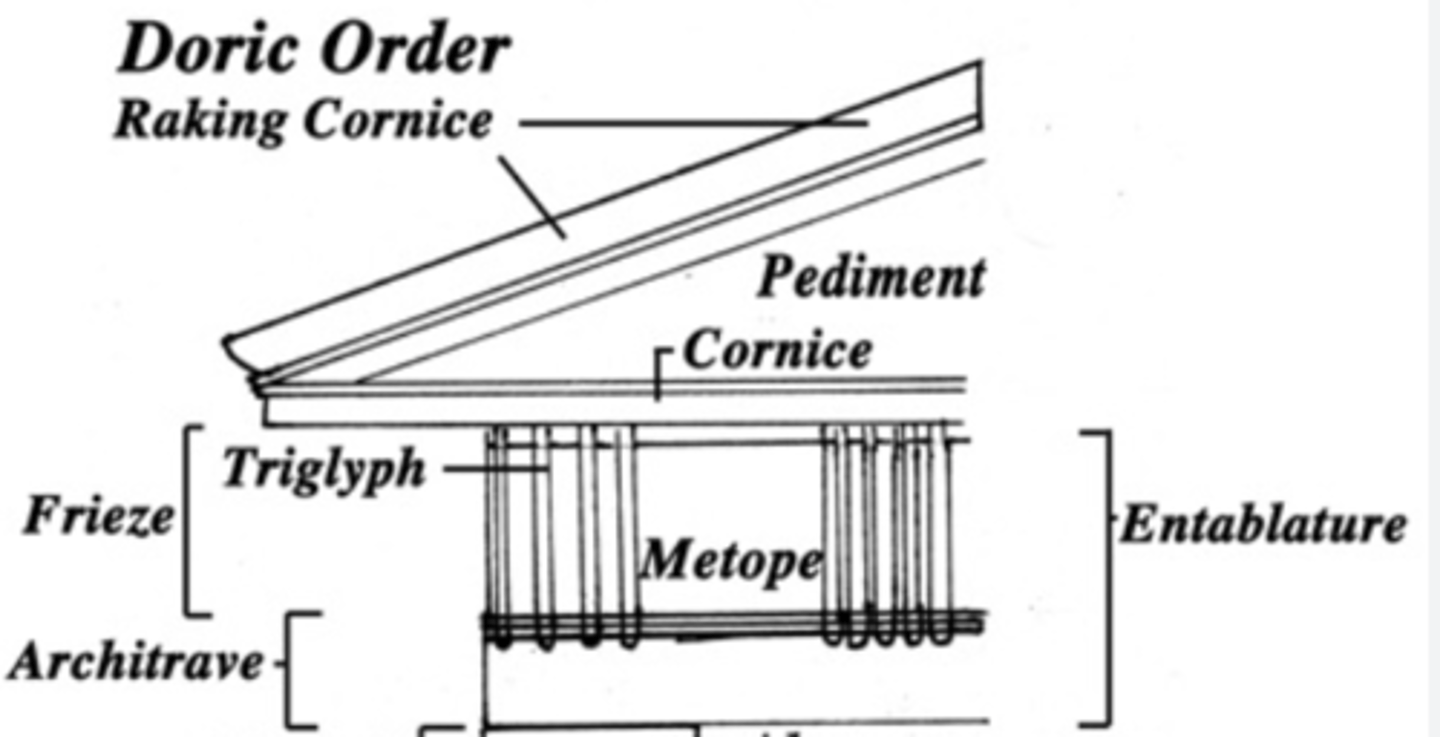
pediment
triangular shape above entablature
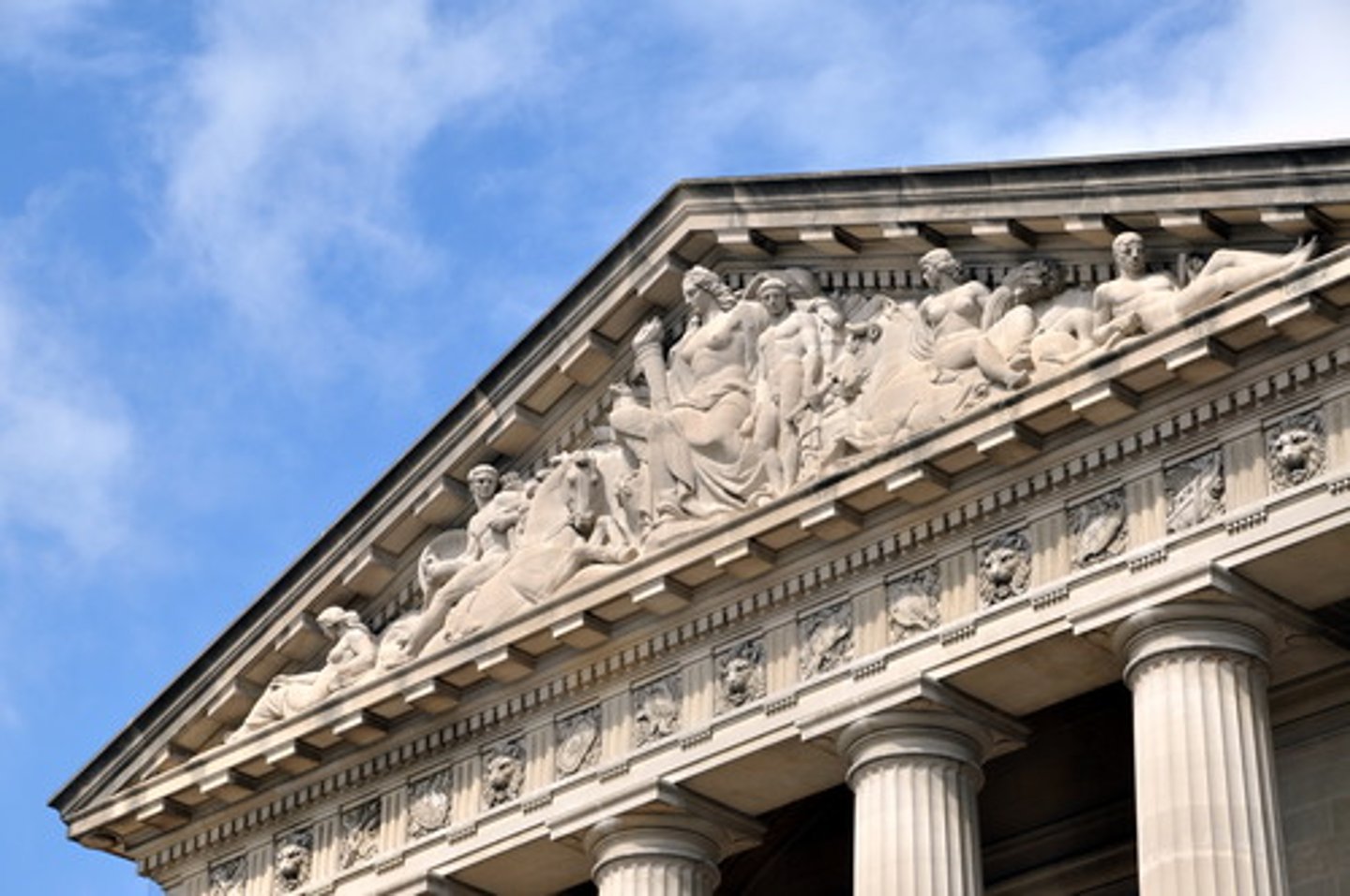
Temple of Apollo
large number of steps on each side, oracle stationed with shrine, in delphi, held all sorts of contests
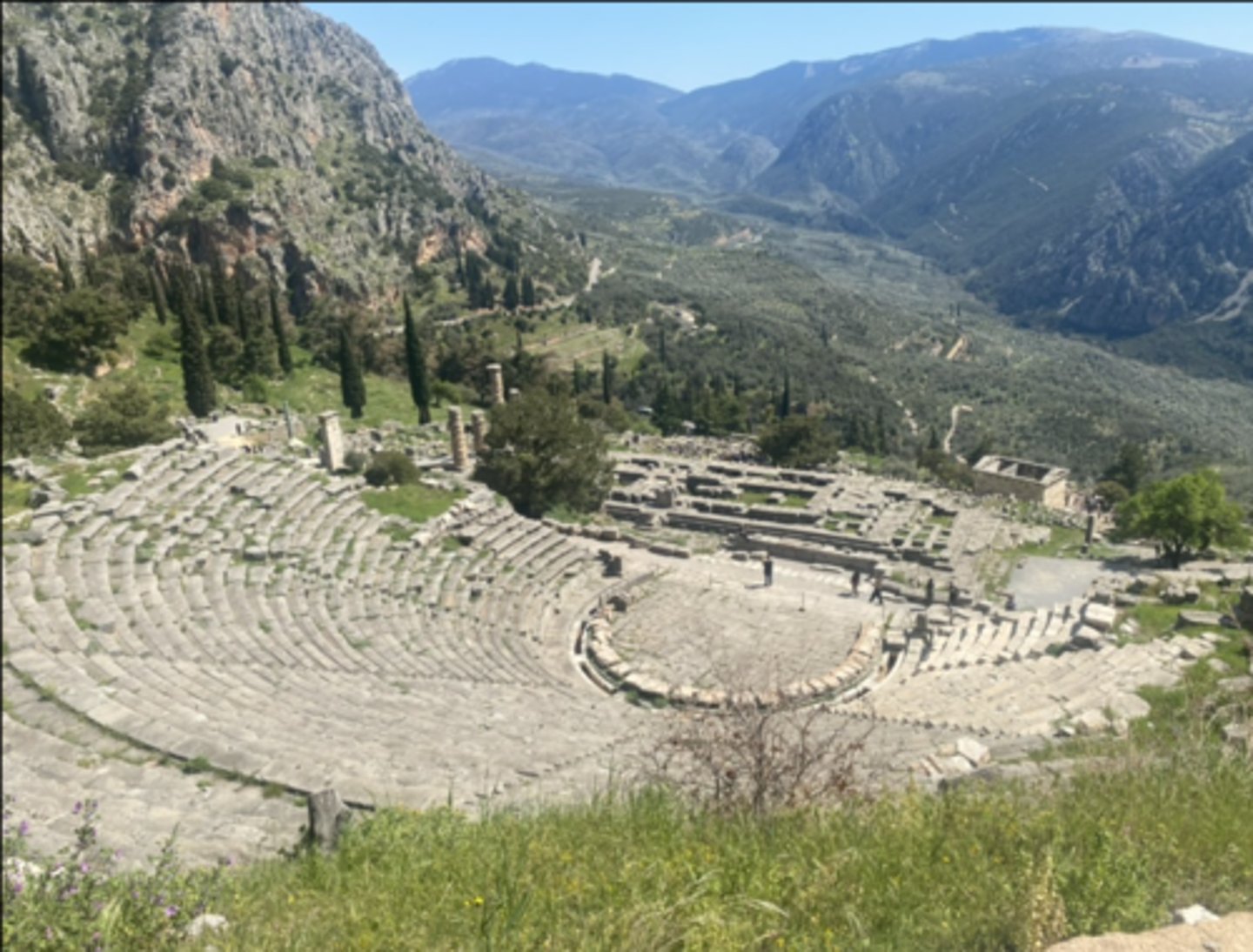
Temple of Zeus
Made out of porous stone
Coated with stucco
Statue of Zeus was 40 ft tall
Pediments
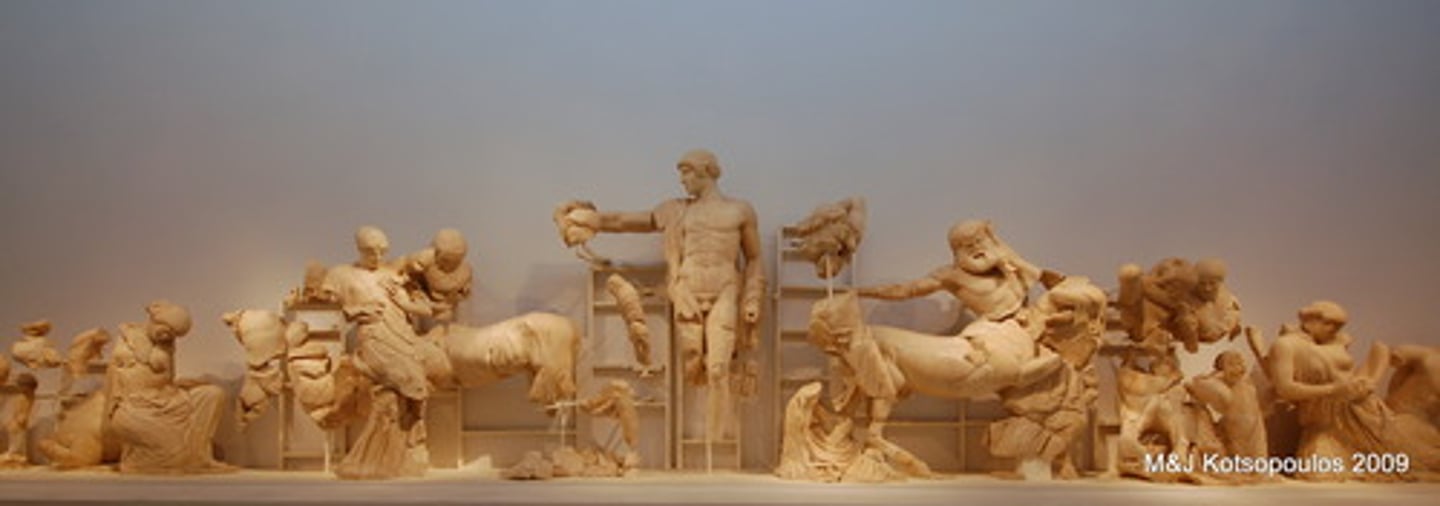
Epidaurus
Outdoor, big seating area
Sounds traveled well in bowl shape Best greek theater
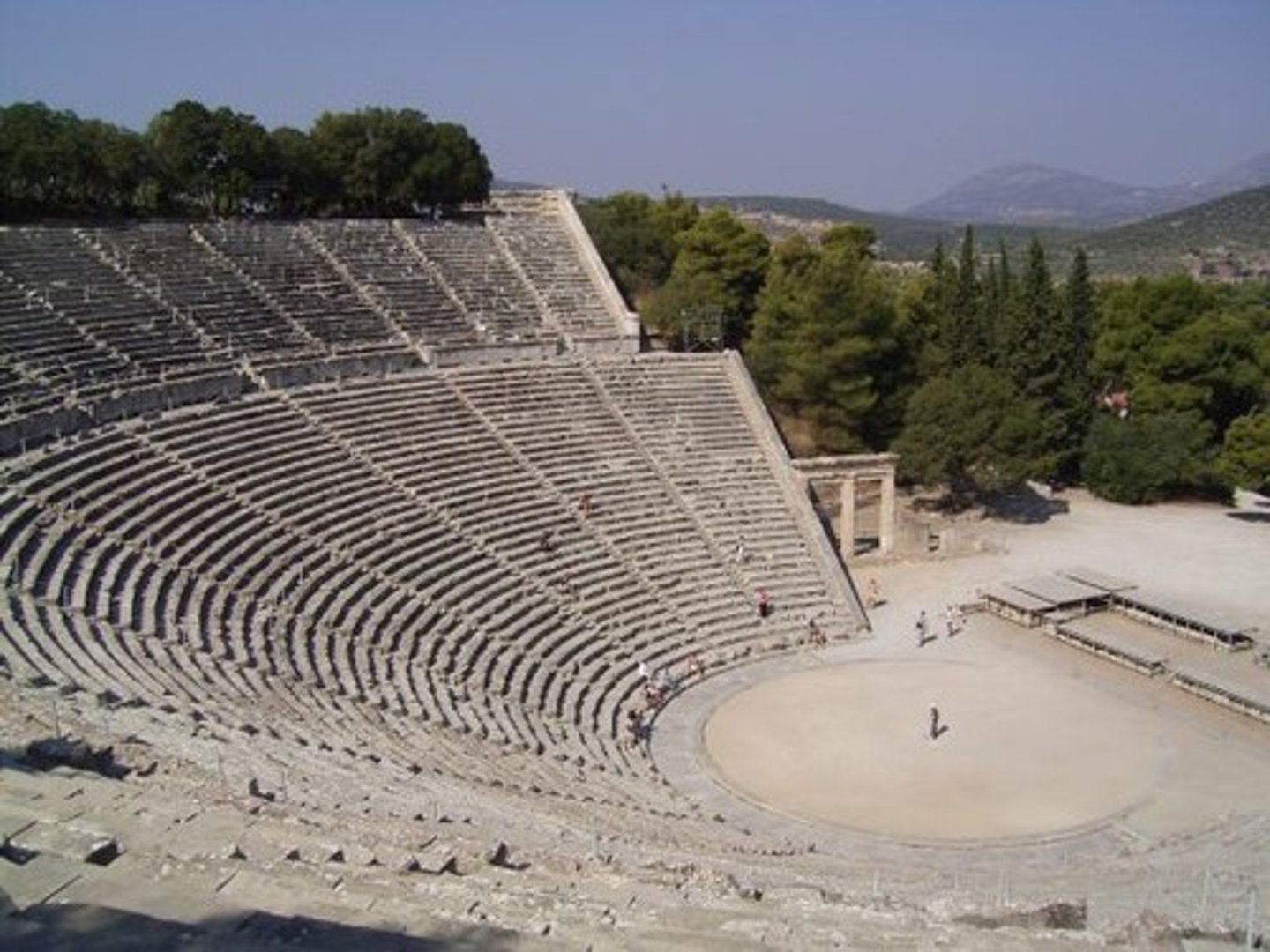
Panathenaic Stadium
Made entirely of marble, Long, narrow, horseshoe shape. Relatively flat terrain. Rebuilt in modern times
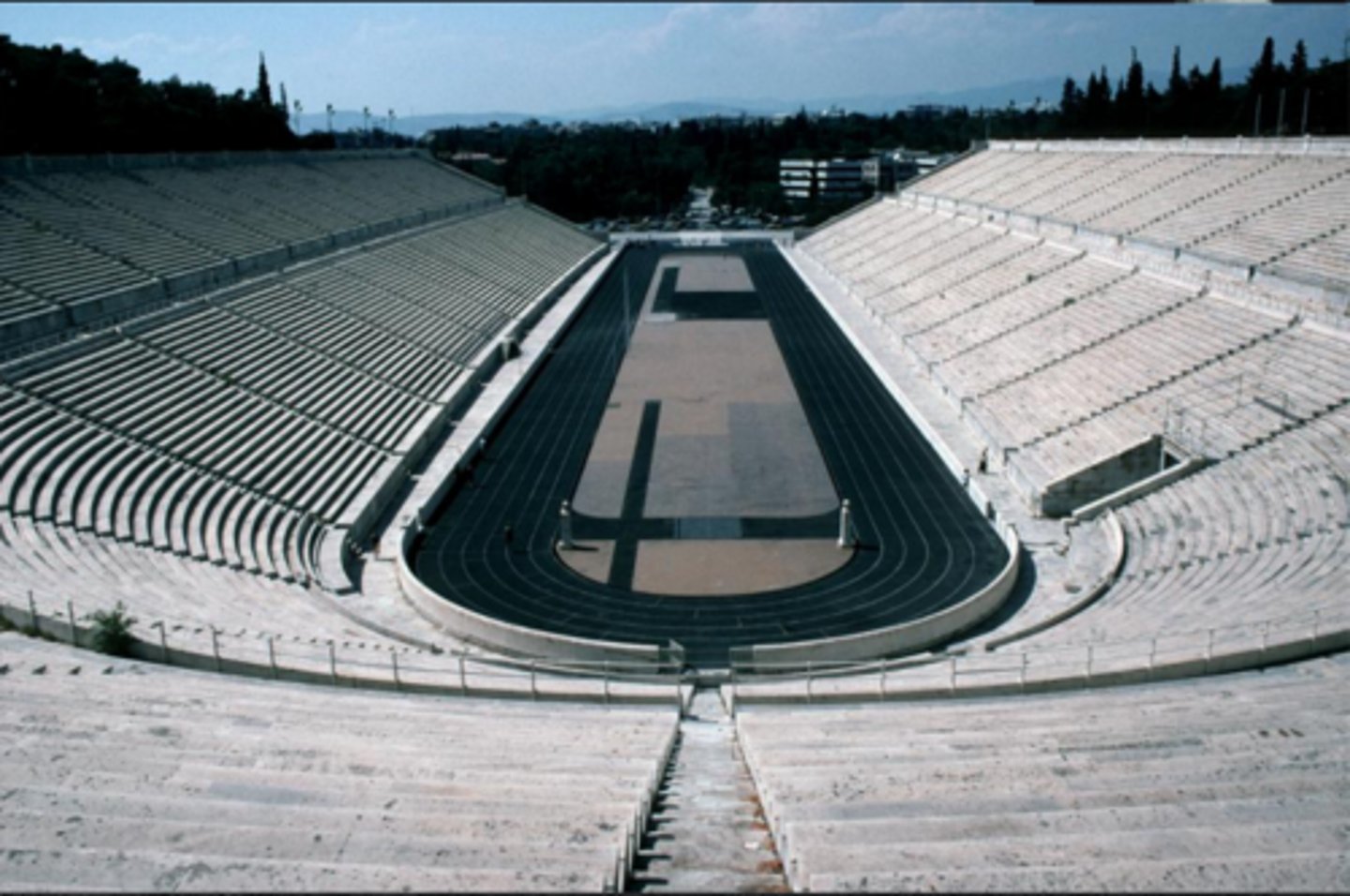
The Acropolis at Athens
pericles pet PR project, "high-city" settlement on hill top includes Temple of Athena Nike, Propylaea (gateway), Parthenon, and Erechteion
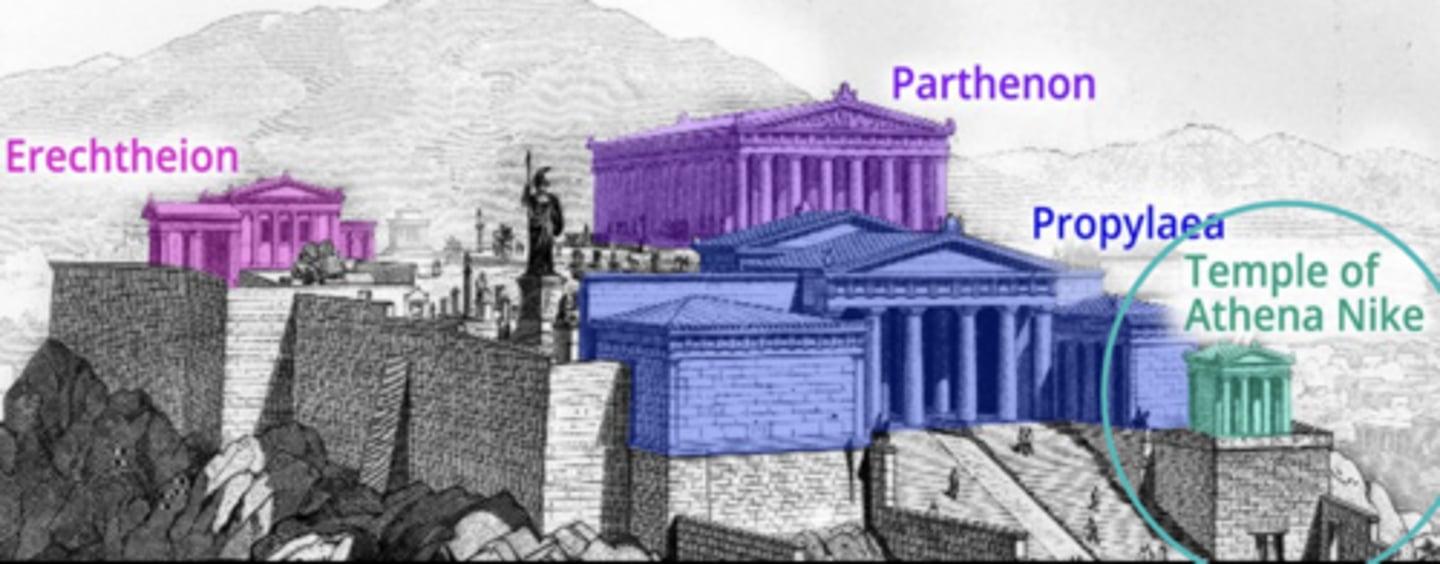
The Parthenon c. 440 BCE architects and sculpture
architects: Iktinos and Kallikrates
Sculptor: Phineas
The Parthenon c. 440 BCE
temple to athena, part of quest to build perfectly proportioned temple, used golden ratio
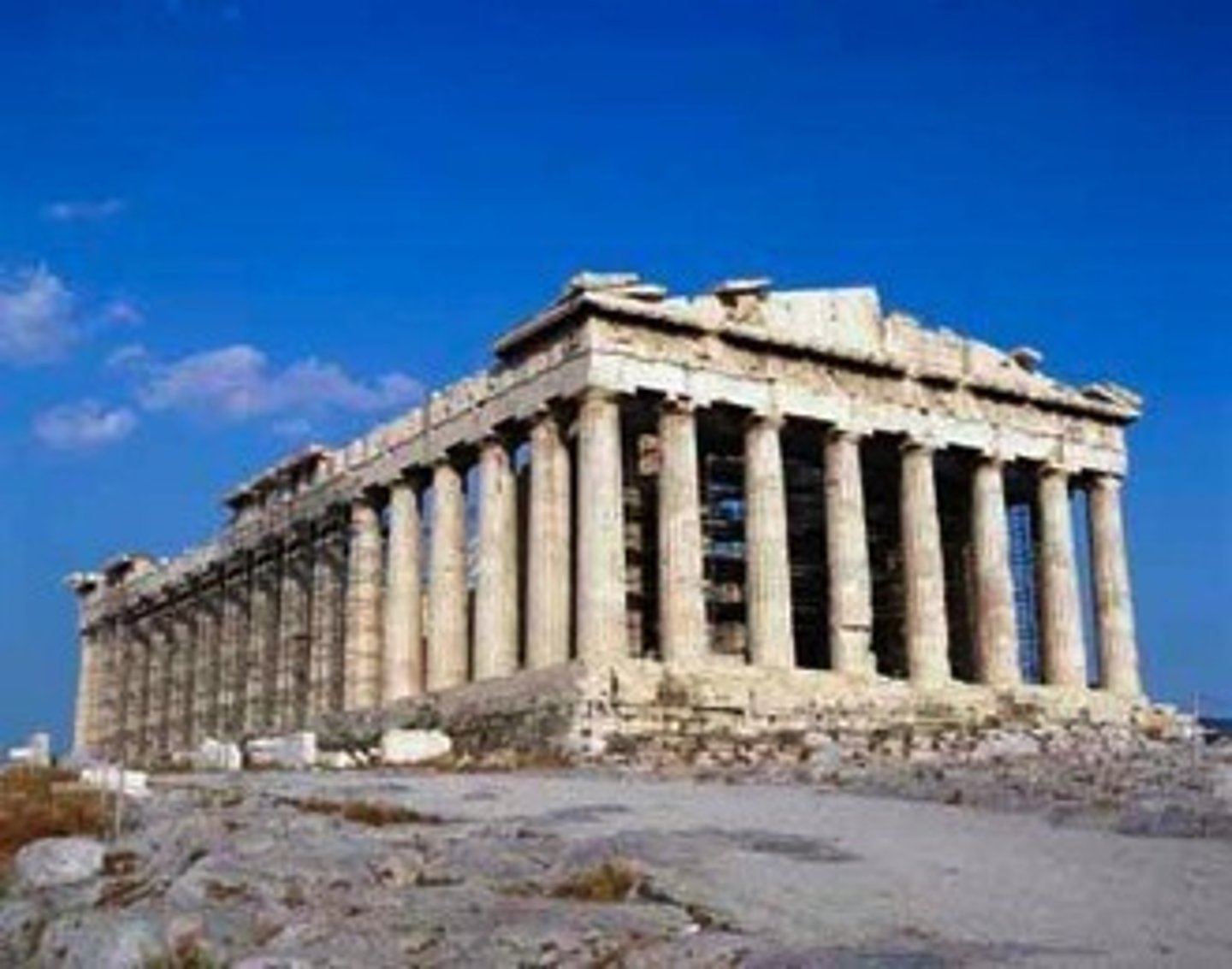
The Parthenon c. 440 BCE columns
doric order, discs stacked on top of each other, used entasis: slight swelling in the center of the columns to make them appear more straight from a distance, reinforce against earthquakes. used math formula (2x+1) short side 8 columns, longside 2(8) + 1 = 17 columns
Marble Metope from Parthenon c. 447-438 BCE
172 cm tall, High relief (more than half of the natural circumference protrudes from the background), depicts Lapis battle with Centaur
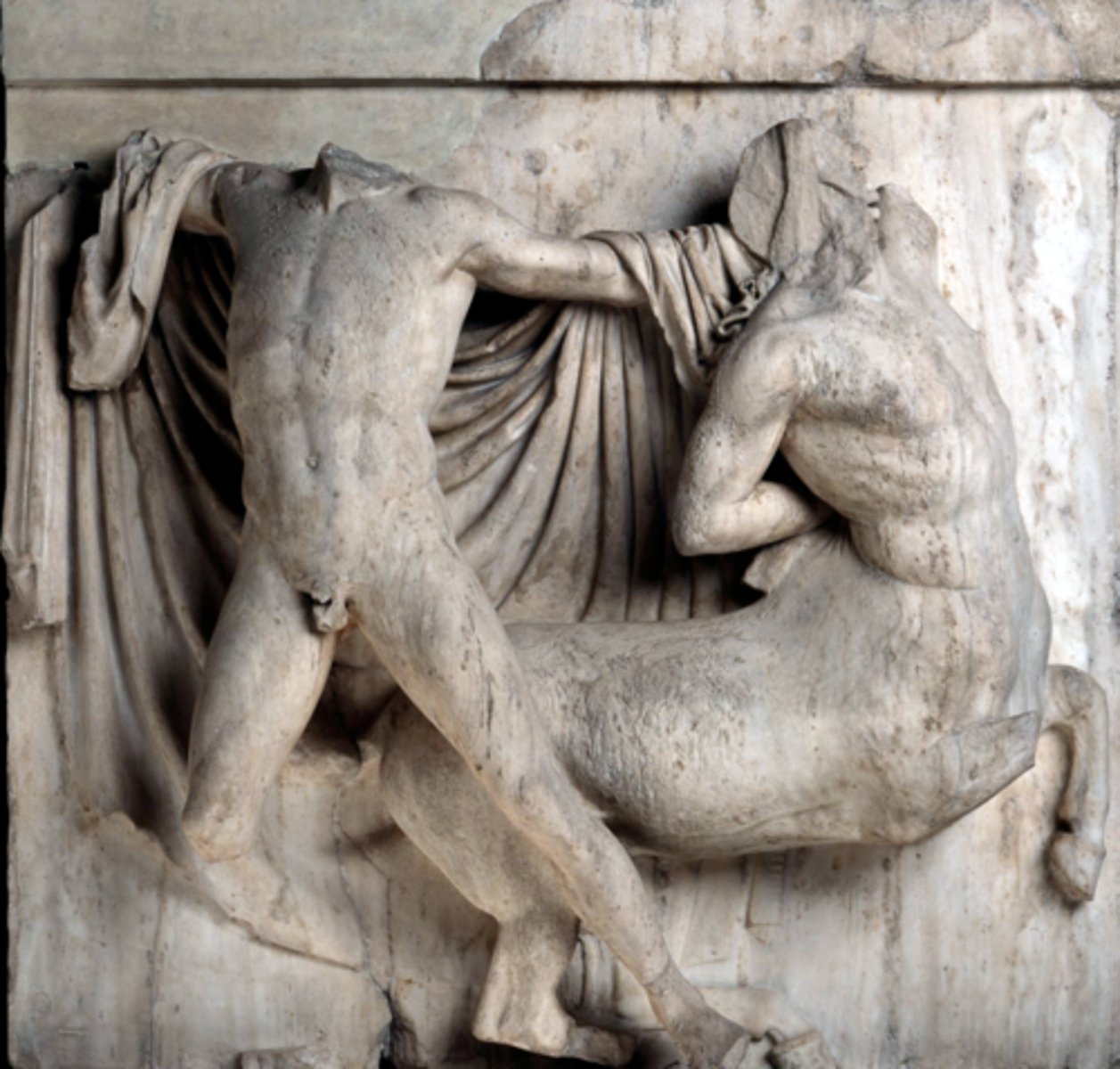
Horsemen from the west frieze of the Parthenon c. 438-432 BCE
100 cm tall
Low relief (less than half of natural circumference protruding, flatter)
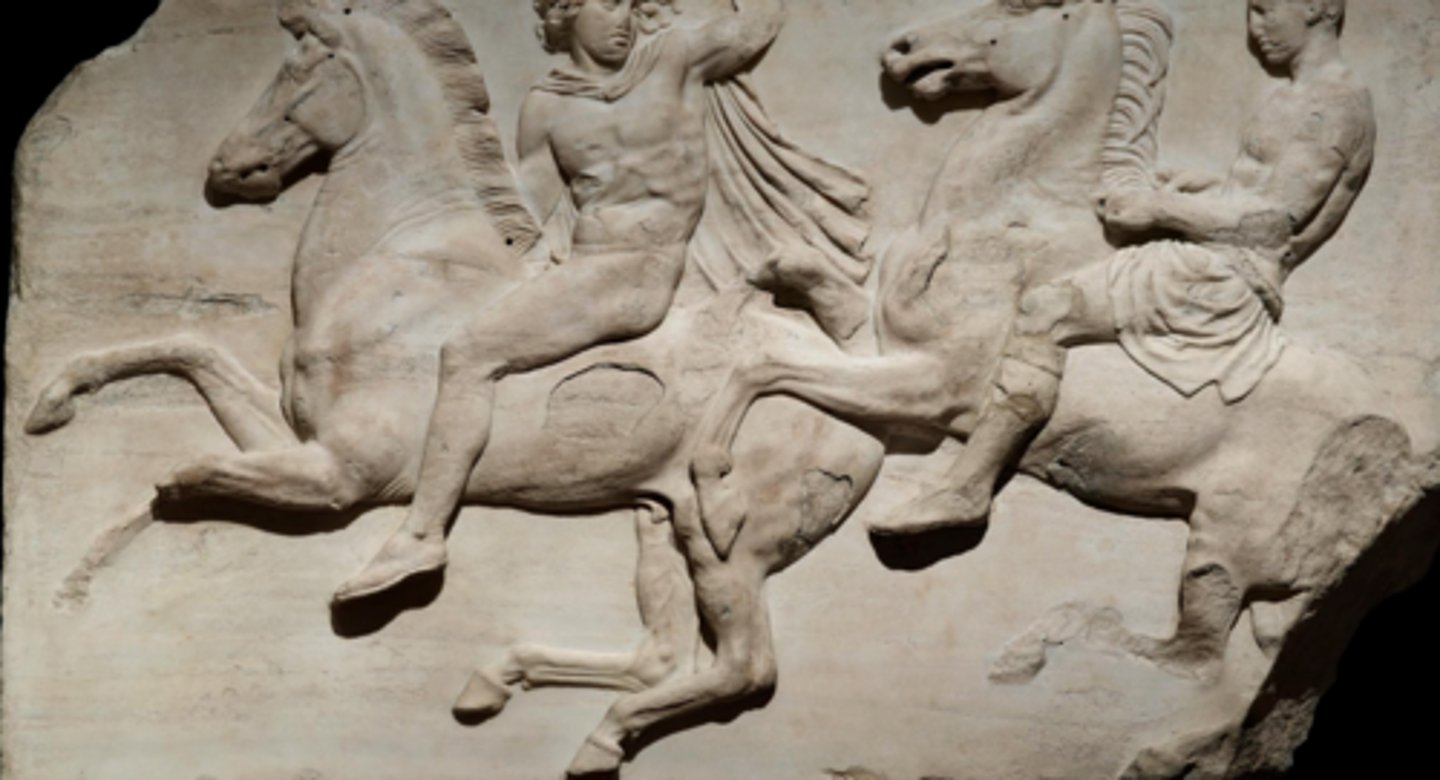
Figures of three goddesses from the east pediment of the Parthenon c. 438-432 BCE
Pedimental sculpture, carved in the round covered in wet drapery
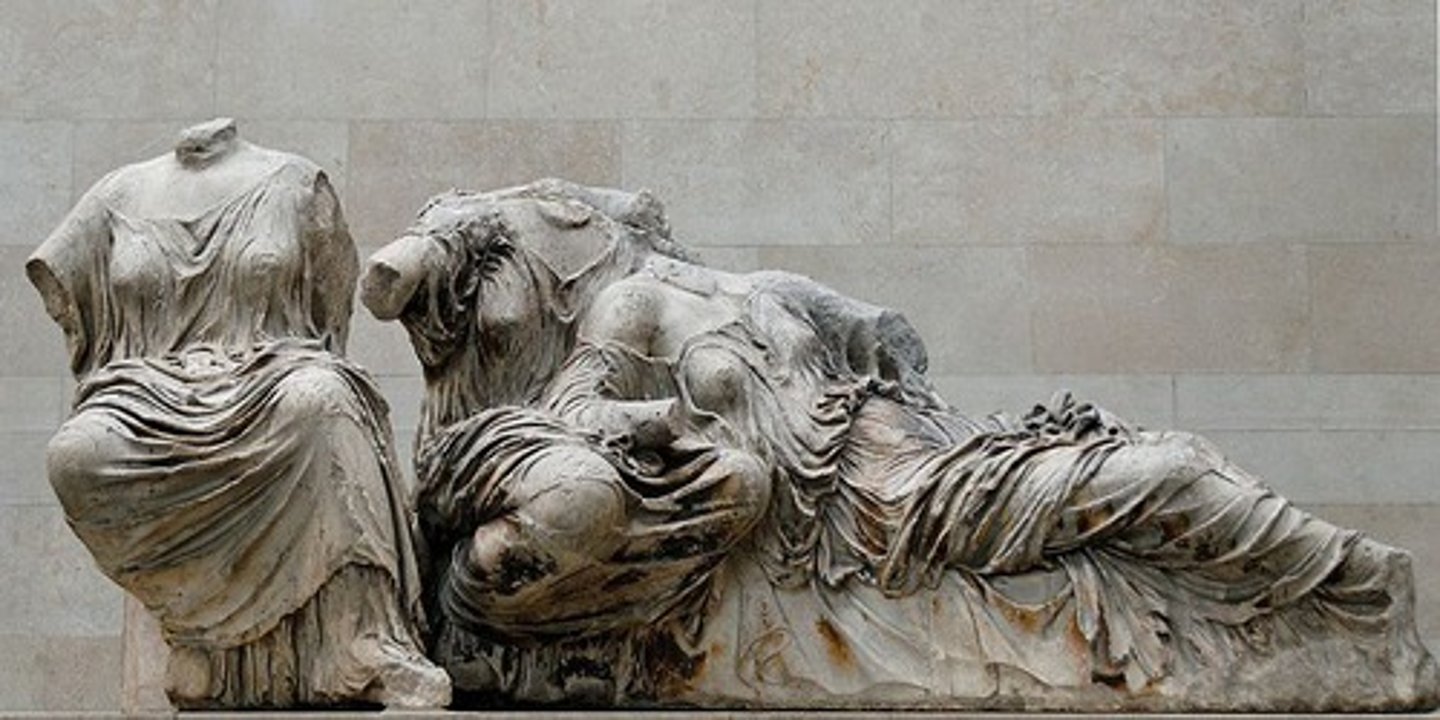
The Erechteion c. 421 BCE
shrine to many gods (Hephaestus, Poseidon, etc)
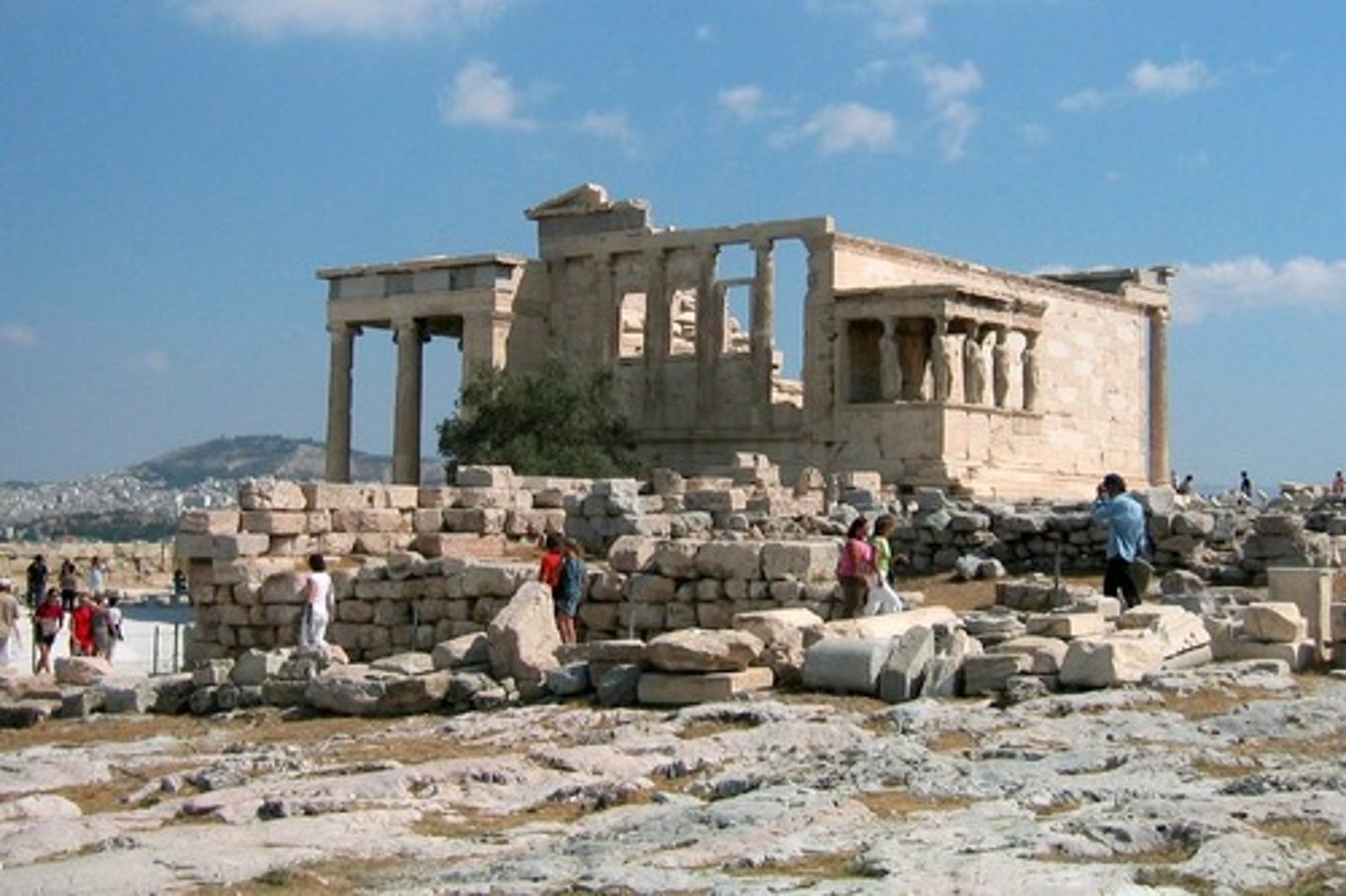
Porch of the Maidens
at Erechteion, Caryatids: sculpted female figure that held up an entablature, Wearing Peplos, bunches up at waist, folds of drapery resemble fluting
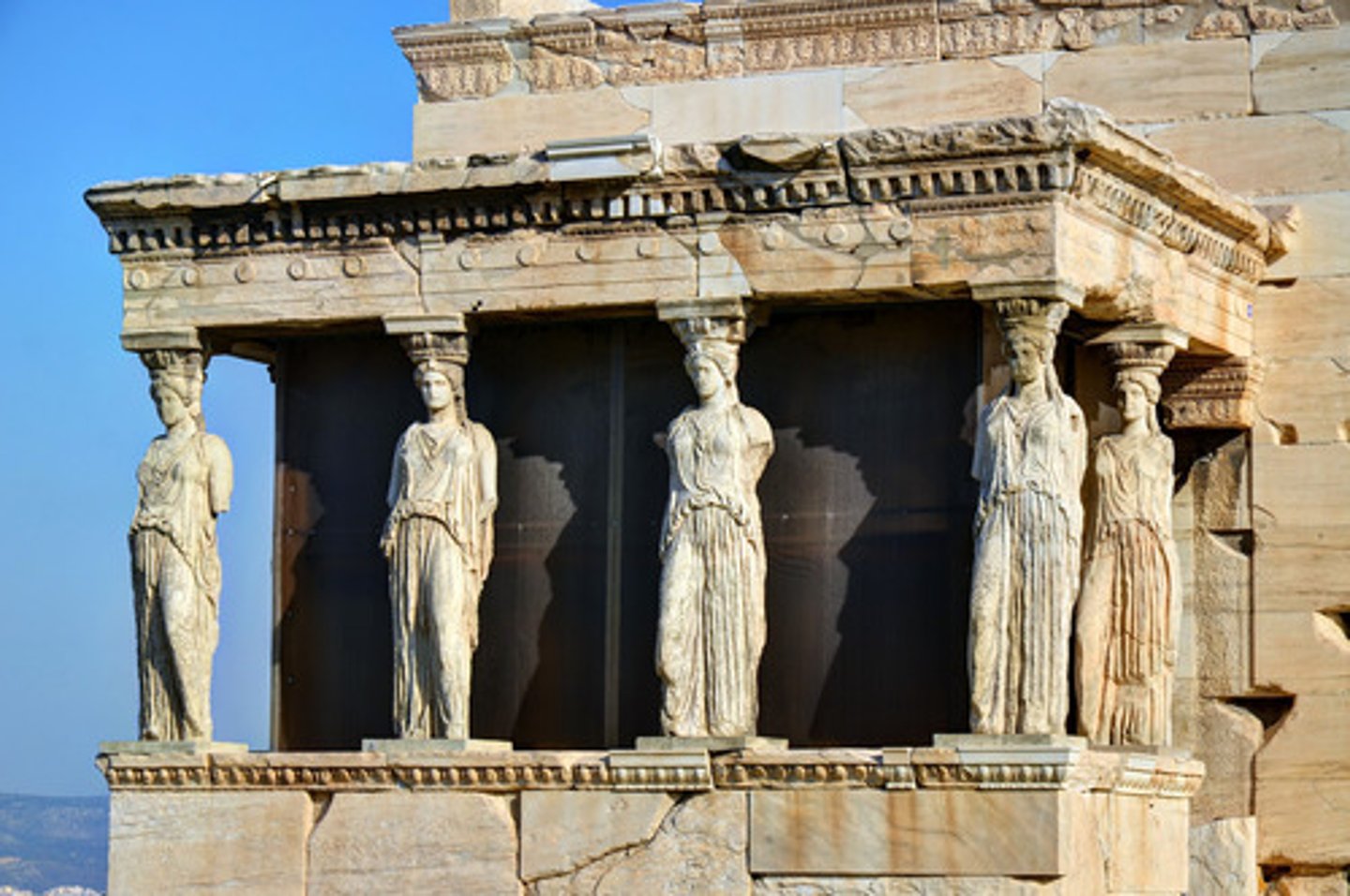
Temple of Athena Nike c. 410 BCE
ionic order, first fully ionic at Acropolis, columns on front and back, none on side. nike adjusting her sandal inside, commoners perform rituals at fron tof temple and glimpse nike, after temple create parapet to prevent falls
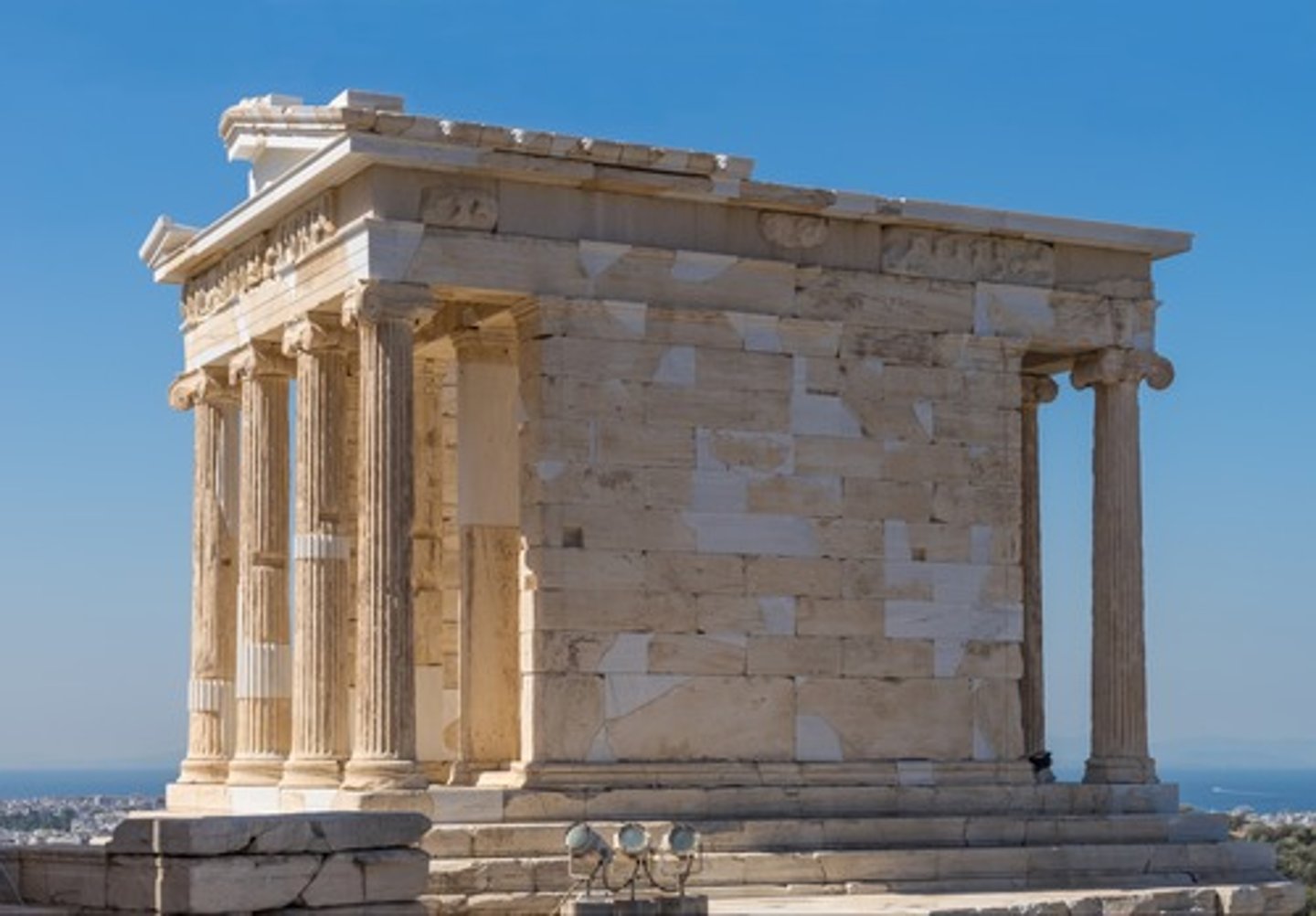
Propylaea
gate way into the acropolis and parthenon and Erechteion (athena nike temple just outside the gate)
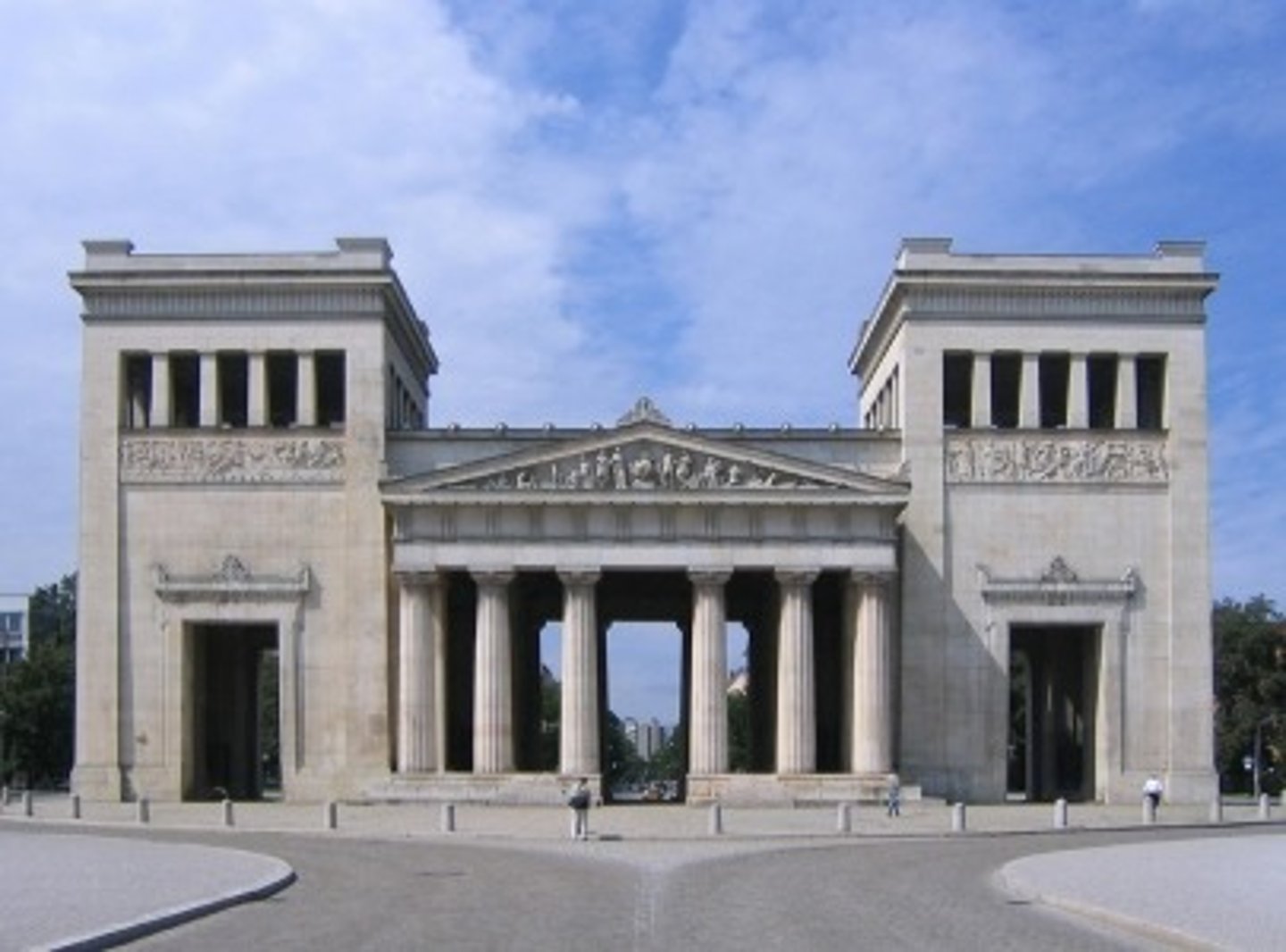
Pergamon Altar (Altar of Zeus) c. 130 BCE
stood at acropolis of Pergamon (copied athens), u-shaped, access by grand staircase. lower half has a fireze that is sculpted in high relief, depicts battle and misery. most famous panel depicts athena fighting giants, kills one, crowned victor by weeping Gaia
